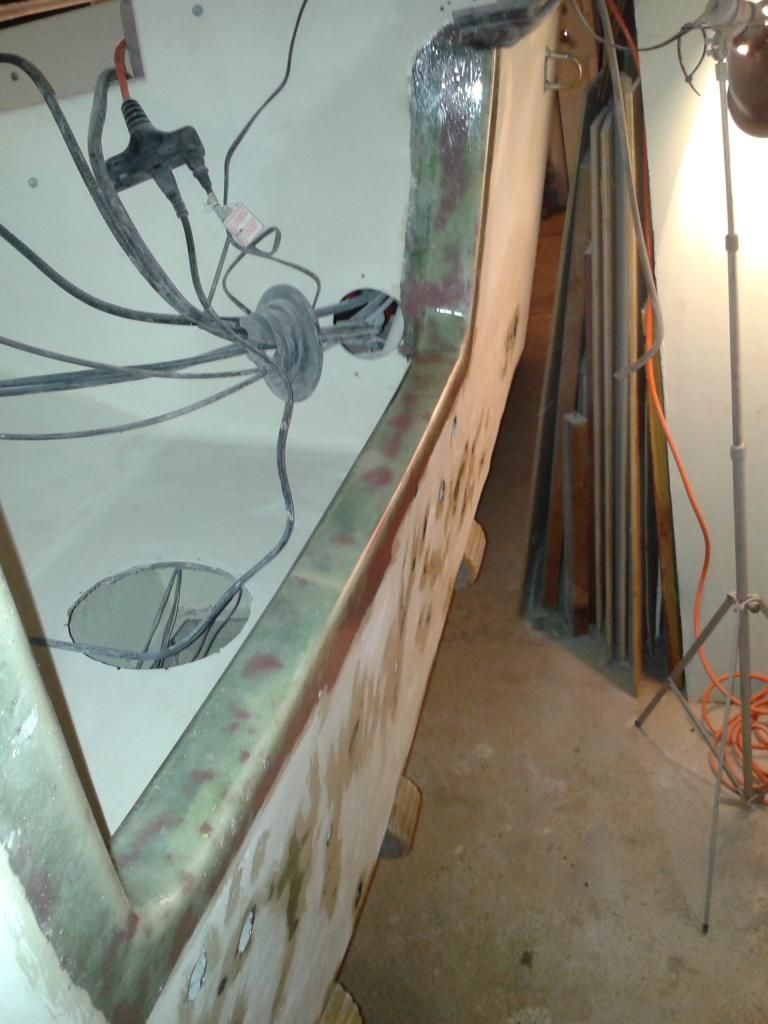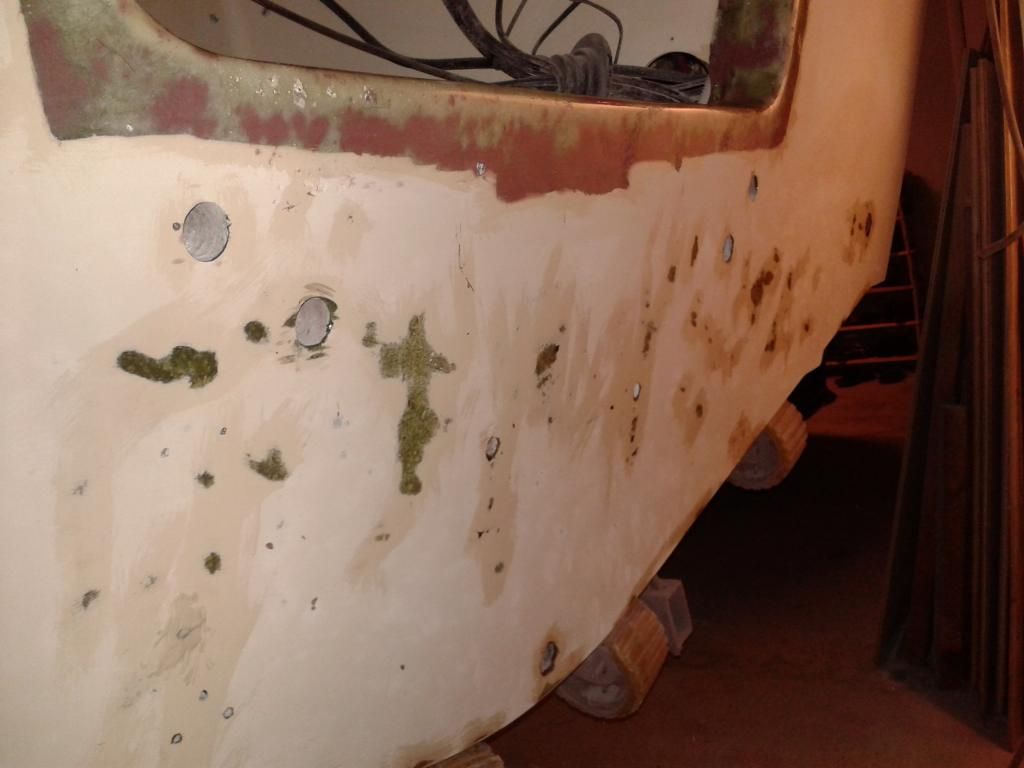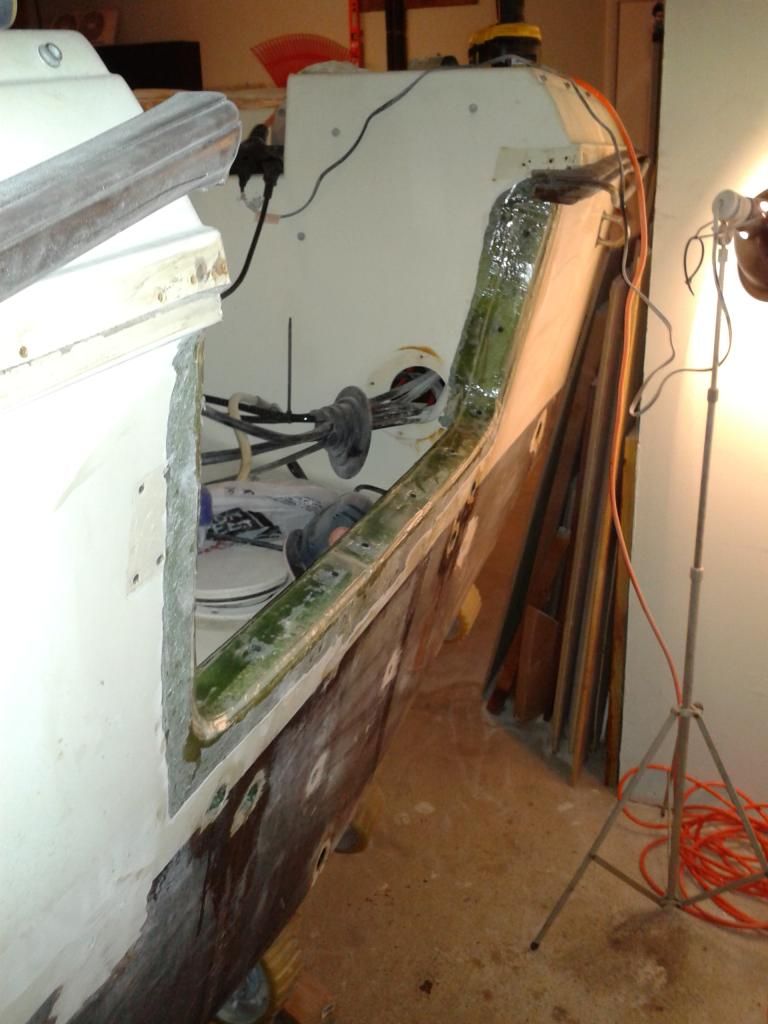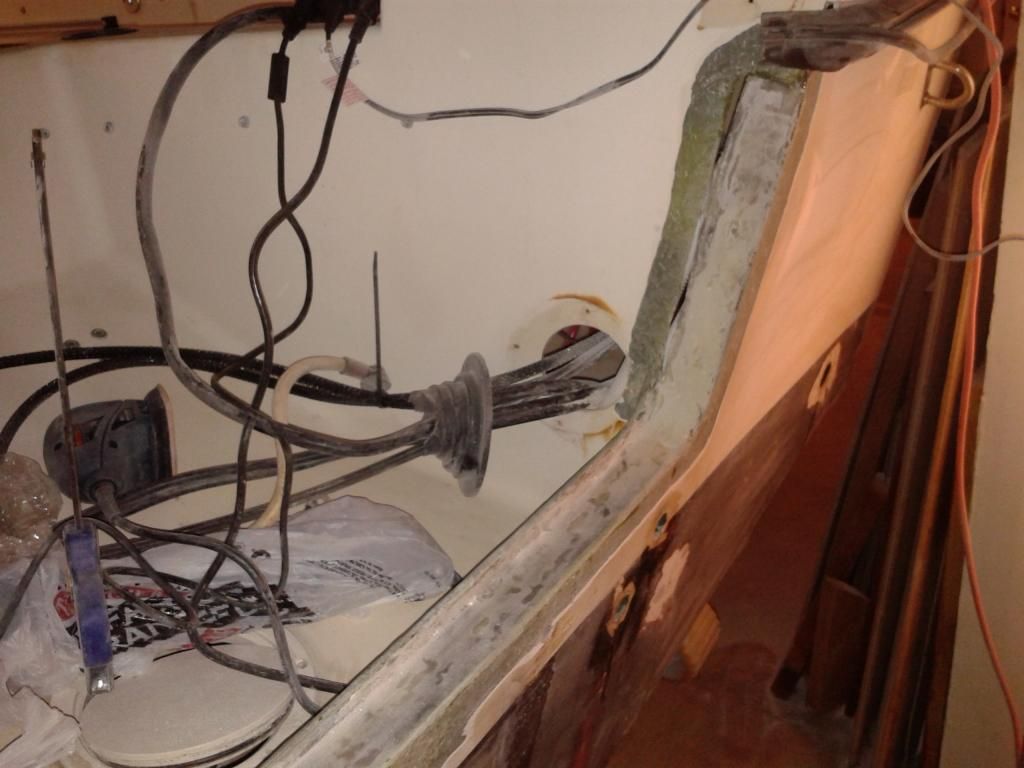I just finished cleaning up the transom on my 1994 - 209.
I bonded the transom all around the deck cutout with Plexus adhesive, there was absolutely nothing holding the hull to the deck on the vertical walls of the engine cutout area, only the silly aluminum strips. While performing the surgery, the wood core was dry, but the outer glass skin was delaminated, I actually suspect that this was poorly bonded from day 1 as its notoriously hard to bond transom wood in place without bagging it in. I put VE resin in between and re-bonded......Its very strong now.
Upon removing the sonar transducer, the nice owner before me left some open screw holes and poorly bedded fittings in the hull, when removed yesterday, I noticed that it was a bit wet only in that area. I applied a vacuum bag to the area and turned on our massive pumps, and immediately water started dripping out. I'm going to leave the vacuum on it for a few days to pull what ever moisture I can out of it. Once I'm happy that its reasonably dry, I'm going to Vacuum bag infuse resin back through the laminate. There is a hole that the transducer wire comes through that is about 10" above the waterline, I'm going to vacuum from there and feed through the screw holes where the transducer used to be. Hopefully the resin will migrate up the transom and out the hole.
To correct the problem of screws in the hull, Im going to bond the SS mounting bracket for the transducer to the hull with Plexus......no more holes below my waterline!
Pictures Attached















